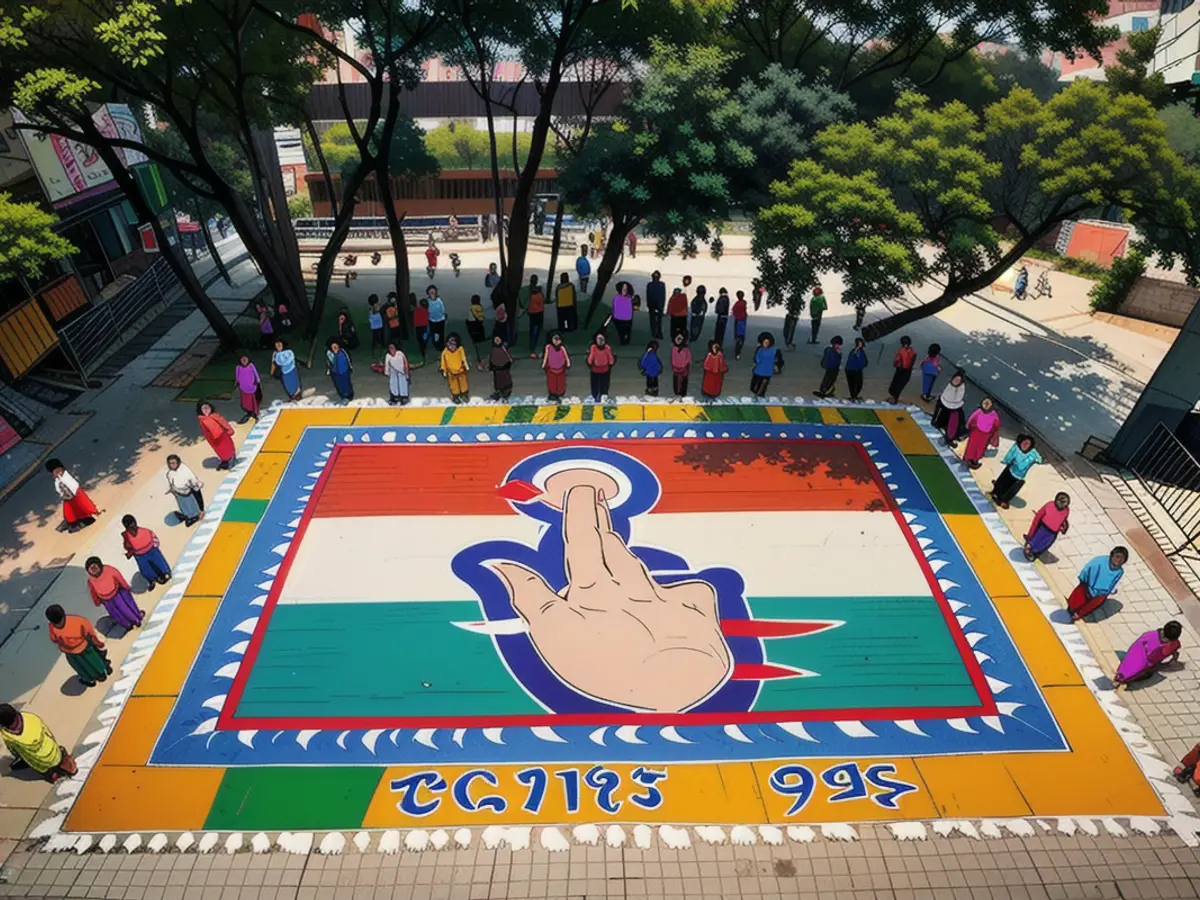"Bound by Confidentiality": The Indelible Ink's Role in the Largest Voting Process
During India's electoral process, the Election Commission employs indelible ink, also known as "voter ink," to deter fraud or multiple votes. After an elector arrives at the polling station, shows their identification, and casts their ballot, their left index finger is marked with this ink. This ink can take up to two weeks to wash off. This simple yet effective method has been in place since the 1950s.
Mohammed Irfan, managing director of Mysore Varnish and Paints Limited (MVPL), the company that makes and distributes the ink to polling stations nationwide, spoke to CNN about its significance: "From celebrities to film stars, it has become a mark of democracy that I think is synonymous with elections," he said.

The country's electorate comprises over 960 million people, making its election the world's largest. MVPL's factory in Mysuru, Karnataka state, has been producing over 2.7 million vials of ink to meet this year's demand, a record-high order.

Each vial of the deep orange-colored ink is enough to mark about 700 voters. While Irfan is unable to reveal the exact formula due to confidentiality, the ink contains the chemical silver nitrate, which causes a purplish stain when exposed to sunlight.

In 1951, India's first post-independence general elections, the idea of using indelible ink emerged to prevent voter fraud. While some authorities doubted its time efficiency, public demand prevailed.

MVPL started in 1937 as a paint supplier, founded by the maharaja (ruler) of Mysore, Krishna Raja Wadiyar IV. The company also supplies paint for the public transport sector, and its indelible ink has found favor in more than 35 countries. A recent example is Ghana, which is transitioning to biometric verification methods instead of using indelible ink.

Anthropologist Mukulika Banerjee, an associate professor at the London School of Economics, believes the practice of bodily markings, such as henna and colored feet in India, could be the reason for the indelible ink's continued success: "I would argue that the marking of the finger (permanently) fits into it in a way that it might not fit in other contexts."
She also noted another consequence of indelible marking: an informal, yet strong peer pressure to vote. In her research on Indian democracy and elections, Banerjee found that after voters visited polling stations, they would compare their ink-stained fingers. "First thing on polling day people do is check out each other's fingers," she revealed. "If your left index finger is not carrying the indelible mark, they'll ask, 'Why haven't you voted?'"
The urge to conform to this social pressure outweighs any reluctance, making it more convenient for voters to exercise their right. This pressure extends to famous personalities such as film stars and athletes who post images of their inked fingers on social media, urging their followers to vote.
Peer pressure and the cultural acceptance of marking one's body for various customs may be the key factors behind the use of indelible ink in a country where people are used to personal forms of expression. Although it may not work as well in other cultures, it fits the Indian context well.
These individuals are raising their fingers and taking selfies showing they've voted, proudly asking "Have you voted?" because they believe in the civic responsibility of convincing others to exercise their right to vote too. This action creates an aspiration, making them desire to be like their heroes and replicate their actions.
Read also:
- Caught up in the present: the end of "The Crown"
- Through New Year's Eve with TV shows
- What's next for the series hits?
- Which shows will be on?
Source: edition.cnn.com








